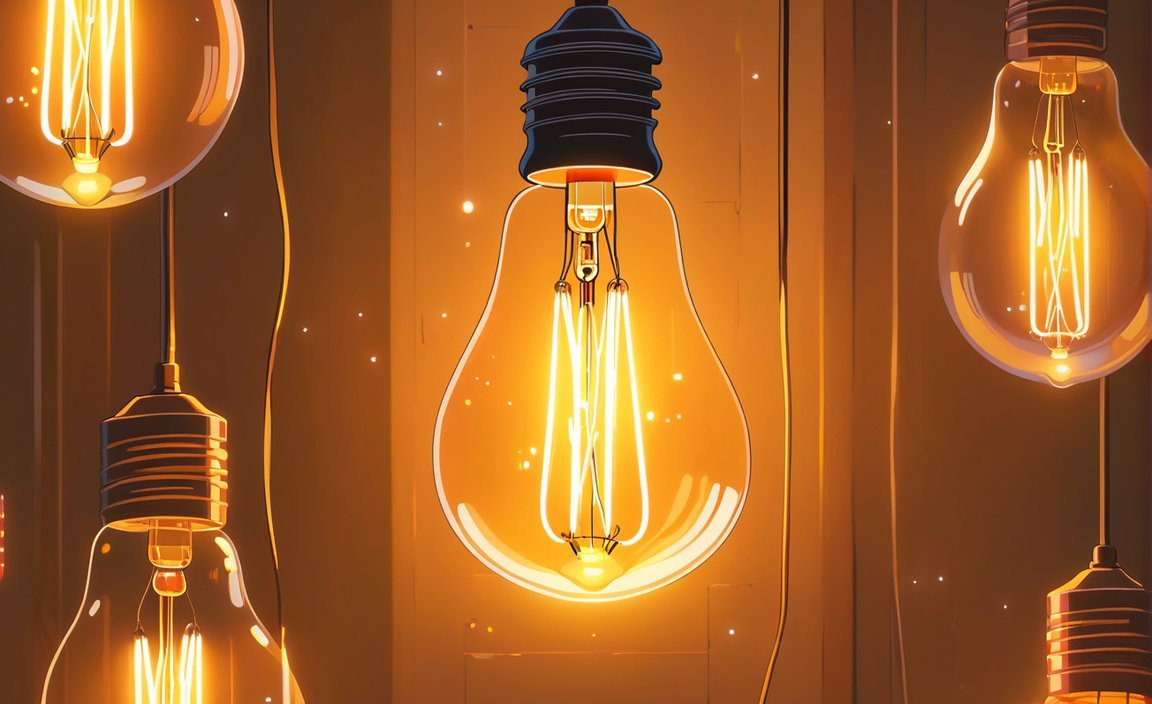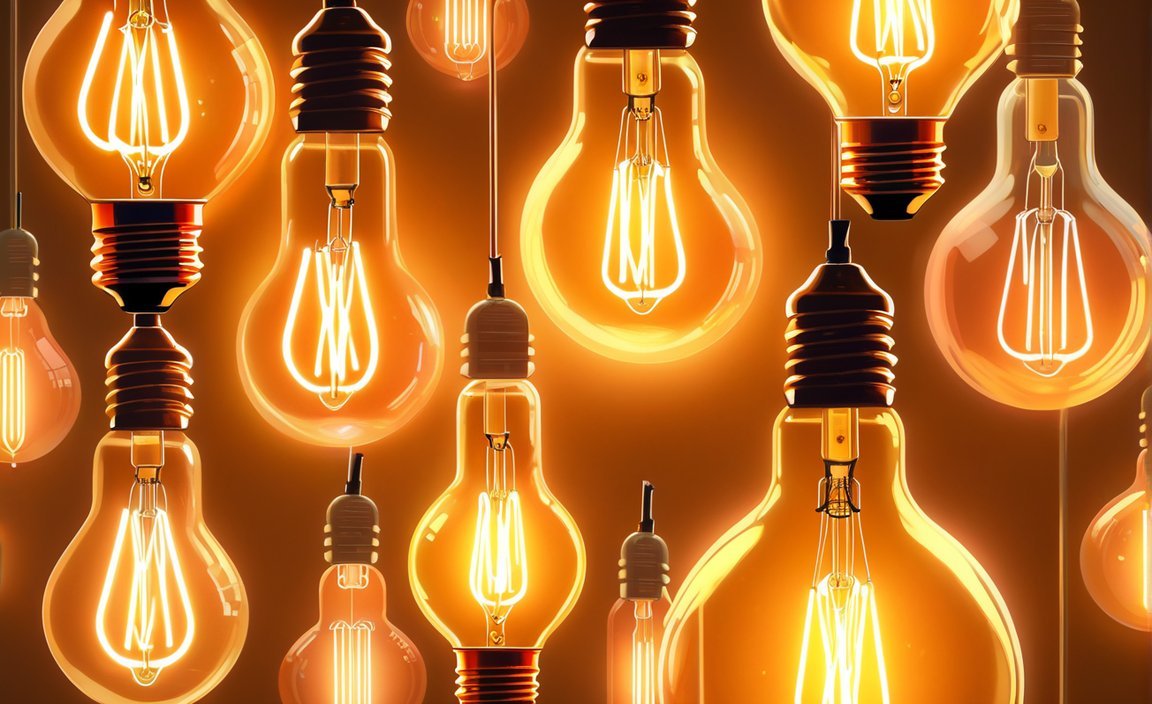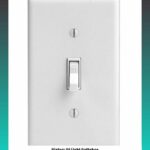Light bulbs are one of the most common and useful inventions in human history. They have revolutionized the way we see, work, and live. But how much do you know about light bulbs? Do you know who invented them, how they work, or what types are available? In this article, we will share some interesting facts about light bulbs that you may not know, and show you how to learn more about them.

Who Invented the Light Bulb?
One of the most common facts about light bulbs is that Thomas Edison invented the first practical and commercially successful light bulb in 1879. However, did you know that Edison was not the only one who contributed to the development of the light bulb? In fact, there were many other inventors and scientists who experimented with electric lighting before and after Edison, such as:
- Alessandro Volta, who invented the first electric battery in 1800, which made electric lighting possible.
- Humphry Davy, who created the first electric arc lamp in 1802, which produced a bright but unstable light.
- Warren de la Rue, who designed the first platinum filament bulb in 1840, which was too expensive to be practical.
- Joseph Swan, who patented the first carbon filament bulb in 1878, which was similar to Edison’s but less efficient.
- Lewis Latimer, who improved the carbon filament bulb by using a cardboard filament in 1881, which lasted longer and was cheaper than Edison’s.
- Nikola Tesla, who developed the first alternating current (AC) system in 1888, which enabled the transmission of electricity over long distances and the use of fluorescent and neon lights.
As you can see, the invention of the light bulb was a collaborative and cumulative process, involving many brilliant minds and innovations. You can learn more about the history and evolution of the light bulb by visiting [this website].
How Does a Light Bulb Work?
Another common fact about light bulbs is that they work by passing an electric current through a thin wire called a filament, which heats up and emits light. However, did you know that different types of light bulbs use different materials and methods to produce light? For example:
- Incandescent light bulbs, which are the most traditional and widely used type of light bulbs, use a tungsten filament enclosed in a glass bulb filled with an inert gas, such as argon or nitrogen. The filament glows when heated by the electric current, producing a warm and yellowish light.
- Fluorescent light bulbs, which are more energy-efficient and longer-lasting than incandescent light bulbs, use a mercury vapor and a phosphor coating inside a glass tube. The mercury vapor emits ultraviolet (UV) light when excited by the electric current, which then strikes the phosphor coating and converts it into visible light.
- LED light bulbs, which are the most modern and advanced type of light bulbs, use a semiconductor material and a diode to create light. The semiconductor material emits light when electrons move across the diode, which is a device that allows current to flow in one direction. LED light bulbs produce a bright and cool light, and can have different colors and shapes.
As you can see, different types of light bulbs have different advantages and disadvantages, depending on their design and function. You can learn more about the science and technology of light bulbs by visiting [this website].
What are Some Fun and Surprising Facts About Light Bulbs?
Besides the common and basic facts about light bulbs, there are also some fun and surprising facts about light bulbs that you may not know, such as:
- The longest-lasting light bulb in the world is the Centennial Light, which has been burning continuously since 1901 in a fire station in Livermore, California. It has a carbon filament and a hand-blown glass bulb, and it has survived several power outages, earthquakes, and changes of location. You can see a live webcam of the Centennial Light by visiting [this website].
- The largest light bulb in the world is the Edison Memorial Tower, which is a 134-foot tall concrete tower topped with a 14-foot replica of Edison’s first light bulb. It is located in Edison, New Jersey, where Edison’s laboratory was once situated. It was built in 1937 to commemorate the 50th anniversary of Edison’s light bulb invention. You can see a picture of the Edison Memorial Tower by visiting [this website].
- The most expensive light bulb in the world is the Diamond Light, which is a LED light bulb covered with 420 diamonds, totaling 32 carats. It was created by a British company called Easy Lighting in 2010, and it was valued at $33,000. It was designed to celebrate the 60th anniversary of the invention of the LED light bulb. You can see a video of the Diamond Light by visiting [this website].
As you can see, light bulbs have a fascinating and diverse history, science, and culture, and there are many more facts about light bulbs that you can discover and enjoy. You can learn more about the facts about light bulbs by visiting [this website].
Curiosity piqued about what Rhymes with Facts? Explore this intriguing topic by clicking here and uncover the unexpected connections between words and ideas!
FAQ
Q: What are light bulbs and why are they important?
A: Light bulbs are devices that create light by heating a wire filament in an enclosed glass case with electricity. They are important because they allow us to see and work in the dark, and they have many applications in various fields, such as science, medicine, art, and entertainment.
Q: Who invented the light bulb and when?
A: The light bulb was invented by Thomas Edison in 1879, after many years of experiments and trials. However, he was not the only one who contributed to the development of the light bulb. There were many other inventors and scientists who worked on electric lighting before and after Edison, such as Alessandro Volta, Humphry Davy, Warren de la Rue, Joseph Swan, Lewis Latimer, and Nikola Tesla.
Q: How do different types of light bulbs work and what are their advantages and disadvantages?
A: Different types of light bulbs use different materials and methods to produce light. The main types of light bulbs are:
- Incandescent light bulbs, which use a tungsten filament enclosed in a glass bulb filled with an inert gas. The filament glows when heated by the electric current, producing a warm and yellowish light. Incandescent light bulbs are cheap and easy to use, but they are also inefficient and short-lived, as they waste most of the energy as heat and burn out quickly.
- Fluorescent light bulbs, which use a mercury vapor and a phosphor coating inside a glass tube. The mercury vapor emits ultraviolet (UV) light when excited by the electric current, which then strikes the phosphor coating and converts it into visible light. Fluorescent light bulbs are more energy-efficient and longer-lasting than incandescent light bulbs, but they are also more expensive and complex, as they require a ballast and a starter to operate. They also contain mercury, which is toxic and hazardous to the environment.
- LED light bulbs, which use a semiconductor material and a diode to create light. The semiconductor material emits light when electrons move across the diode, which is a device that allows current to flow in one direction. LED light bulbs produce a bright and cool light, and can have different colors and shapes. LED light bulbs are the most modern and advanced type of light bulbs, and they have many advantages, such as high efficiency, long lifespan, low heat, and environmental friendliness. However, they are also the most expensive and sensitive, as they require a driver and a heat sink to function properly.
Q: How can I recycle light bulbs and why is it important?
A: Recycling light bulbs is important because it can save energy, reduce waste, and protect the environment. However, not all types of light bulbs can be recycled in the same way. Here are some tips on how to recycle light bulbs:
- Incandescent light bulbs cannot be recycled, as they do not contain any valuable or hazardous materials. They should be thrown away in the regular trash, after wrapping them in paper or plastic to prevent injuries from broken glass.
- Fluorescent light bulbs can be recycled, as they contain mercury and other metals that can be recovered and reused. They should be taken to a special collection point or a recycling center, where they will be safely handled and processed. They should not be thrown away in the regular trash, as they can break and release mercury, which is harmful to humans and animals.
- LED light bulbs can be recycled, as they contain electronic components and materials that can be recovered and reused. They should be taken to an electronic waste collection point or a recycling center, where they will be properly sorted and dismantled. They should not be thrown away in the regular trash, as they can contain toxic substances, such as lead and arsenic, which can pollute the soil and water.
Q: How can I choose the right light bulb for my needs and preferences?
A: Choosing the right light bulb for your needs and preferences can be tricky, as there are many factors to consider, such as:
- The size and shape of the light bulb, which should fit the socket and the fixture of your lamp or device. You can check the label or the manual of your lamp or device to find out the recommended size and shape of the light bulb.
- The wattage and the lumens of the light bulb, which indicate the power and the brightness of the light bulb. You can check the label or the manual of your lamp or device to find out the maximum wattage and the desired lumens of the light bulb. Generally, the higher the wattage, the brighter the light bulb, but also the more energy it consumes. The higher the lumens, the brighter the light bulb, but also the more expensive it is. You can use a conversion chart or a calculator to find out the equivalent wattage and lumens of different types of light bulbs.
- The color temperature and the color rendering index (CRI) of the light bulb, which indicate the color and the quality of the light bulb. The color temperature is measured in kelvins (K), and it ranges from warm white (2700K) to cool white (6500K). The color rendering index (CRI) is measured in a scale from 0 to 100, and it indicates how accurately the light bulb shows the colors of the objects it illuminates. Generally, the lower the color temperature, the warmer and more yellow the light bulb, but also the more relaxing and cozy it is. The higher the color temperature, the cooler and more blue the light bulb, but also the more stimulating and bright it is. The higher the CRI, the better and more natural the light bulb, but also the more expensive it is. You can choose the color temperature and the CRI of the light bulb according to your preference and the purpose of the lighting. For example, you may prefer a warm white light bulb with a high CRI for your bedroom or living room, where you want to create a comfortable and cozy atmosphere. You may prefer a cool white light bulb with a low CRI for your kitchen or bathroom, where you want to have a clear and bright lighting.















